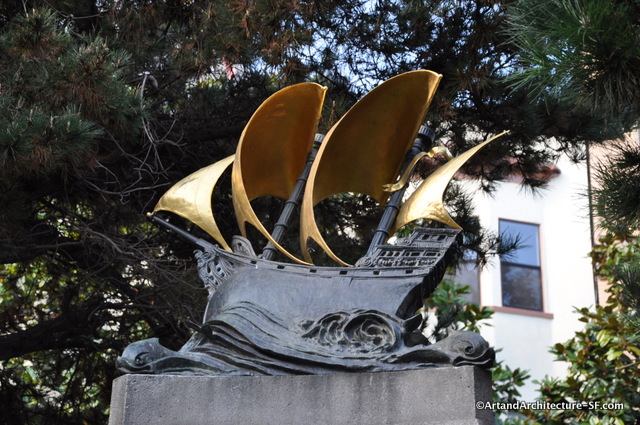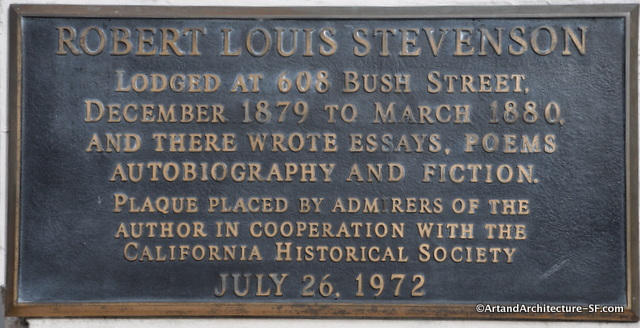Portsmouth Square
Chinatown
This marks the site of the first public school in California.
Erected in 1847 Opened April 3, 1848
This commemorative marker was erected in 1957 by the grand lodge of free and accepted masons of the state of California California Historical Landmark 587.
The following contemporary account of the little schoolhouse in Portsmouth Plaza was written by Charles P. Kimball in 1853 for the San Francisco Directory:
In April 1847, the number of inhabitants exclusive of Indians, was 375. Eight months afterwards, when a census was taken by the Board of School Trustees, the number exceeded 800. Of these there were adult males, 473; adult females, 177; children of age proper to attend school, 60. This increase of more than an hundred per cent, in eight months, took place some months before the discovery of gold, and when California was sought merely for agricultural and commercial purposes.As early as January 1847, a complaint was published in the California Starthat there was no school for children, the writer stating that he had counted forty children playing in the street. A public meeting was then called, to adopt measures to found a school. But the project failed. Some months later it was revived, with better success. A school house was built, and completed by the 1st of December….
The first American school in California was duly opened on Monday, the 3d day of April, 1848….
This first American school on the Pacific coast south of Oregon, though founded apparently on a basis so safe and economical, had a short lived existence. In less than a year the gold excitement was to sweep over the country like a whirlwind, and for a season to crush everything like intellectual and moral culture, substituting the one all-absorbing passion for the accumulation of wealth.
 At this time, I have been unable to find who the sculptor was.
At this time, I have been unable to find who the sculptor was.







